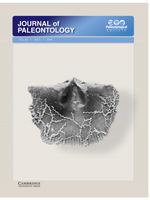The mechanism that guides the formation of exceptionally preserved fossils with soft tissues variously displayed is a paramount challenge to paleontology. The key question for exceptional preservation is the nature of the slowdown of decay and acceleration of soft tissue mineralization. Here we report the experimental formation of subfossils of the brine shrimp Artemia salina (Crustacea, Branchiopoda), which were produced during 14 months of aging in a kaolinite clay sediment. EDS/SEM elemental analyses showed that the subfossils were preserved as thin clay-organic replicas that displayed fine anatomical details. Decomposition in the clay-colloidal solution established highly heterogeneous acidic conditions, with the lowest pH typically found in the vicinity of the buried organisms, and visually manifested in patchy coloration of the sediment. Elevated acidity is likely what ultimately slowed the decay. An acidic environment increases the rate of clay destruction and, consequently, the diffusion rate decline. As a result, the acidic products quickly accumulate around a buried body; this in turn inhibits bacterial proliferation, accelerates the acidic hydrolysis of clay and, accordingly, the release of tanning and mineralizing agents. The subfossils remained stable under experimental high pressure and temperature. These model subfossils exhibit features that are typical of some Lagerstätten fossils preserved in fine-grained sediments.
How to translate text using browser tools
1 May 2016
Decaying of Artemia salina in clay colloids: 14-month experimental formation of subfossils
Elena B. Naimark,
Maria A. Kalinina,
Alexander V. Shokurov,
Alexander V. Markov,
Natalia M. Boeva
ACCESS THE FULL ARTICLE

Journal of Paleontology
Vol. 90 • No. 3
May 2016
Vol. 90 • No. 3
May 2016




